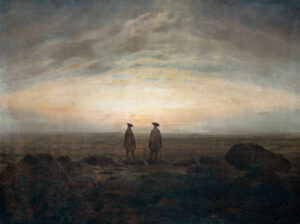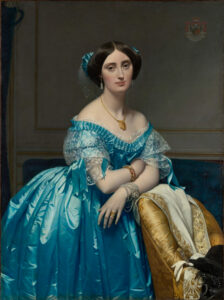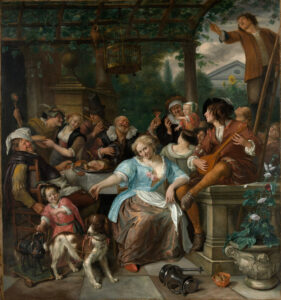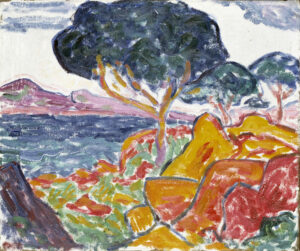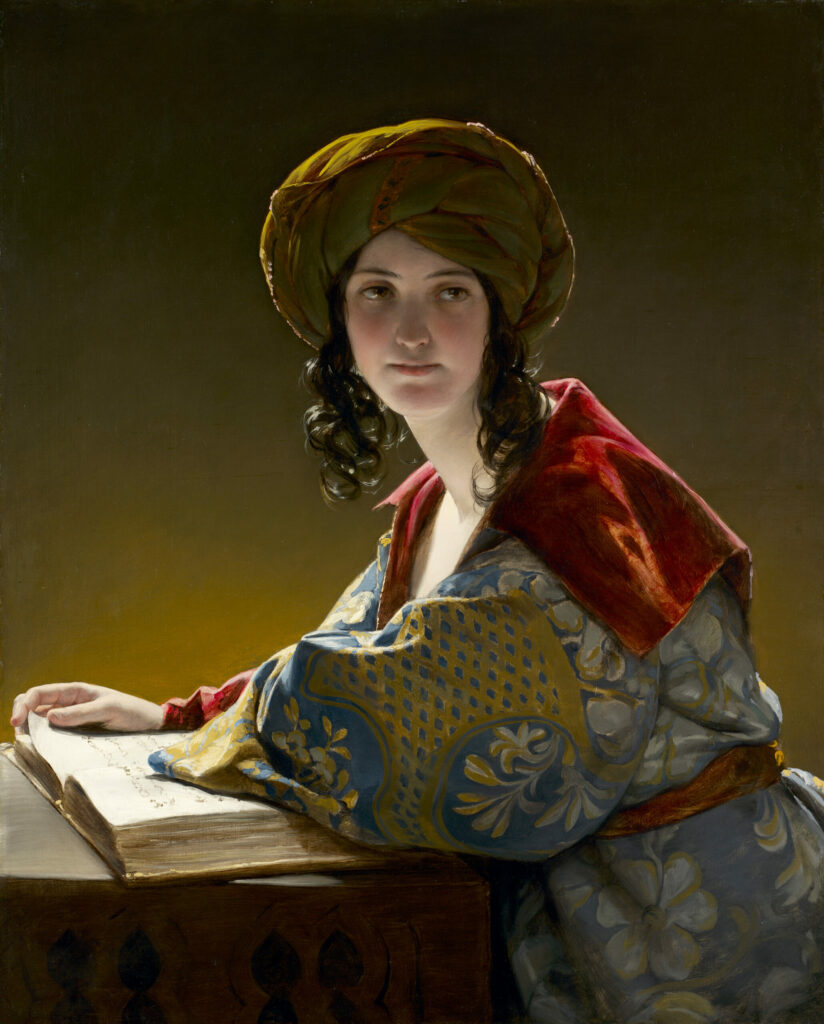
Friedrich Amerling here depicts a young European woman adorned in sumptuous Turkish costume: a golden turban with expertly orchestrated folds, a blue silk robe with floral motifs, and a red velvet shawl. This 1838 canvas perfectly illustrates the romantic Orientalism of the 19th century.
The treatment of light, caressing the precious fabrics and delicately modeling the face, reveals the artist’s technical mastery. The contrasting textures—shimmering silk, deep velvet, patinated leather of the book—testify to the influence of the Dutch masters. This work belongs to the European Orientalist vogue, where a fantasized Orient becomes a pretext for displaying pictorial virtuosity and exotic sensuality, without genuine concern for ethnographic authenticity.
Further information
- The Young Eastern Woman, by Friedrich Amerling, 1838
- 88.5 x 71.5 cm (34 13/16 x 28 1/8 in.), oil on canvas
- The Cleveland Museum of Art, on view in 219, 19th Century European
- https://www.clevelandart.org/art/1991.163
Leading Austrian portraitist Friedrich Amerling (1803-1887) embodies the Viennese bourgeois art of the 19th century. From humble origins, he climbed the artistic ranks through his studies at the Vienna Academy, then in Prague, before his decisive stay in London where he met Thomas Lawrence, the tutelary figure of English portraiture. After a Parisian period where he mingled with Vernet, he perfected his training in Rome through contact with ancient and Renaissance art. His travels to the Netherlands, Munich, and Düsseldorf, where he met academy director Friedrich Wilhelm von Schadow, enriched his stylistic palette. His creative zenith coincided with a second Roman sojourn where he collaborated with Leopold Pollak and August Riedel, specialists in “Italian beauties.” Amerling then developed a sentimental genre painting, representing solitary women in graceful poses, blending worldly portraiture with orientalizing exoticism.

